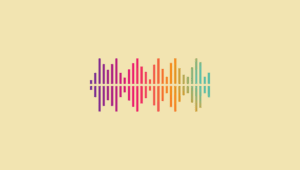Just like other parts of your body, your eyes change over time. The most common eye conditions associated with aging are:
- Cataracts
- Diabetic retinopathy
- Glaucoma
- Macular degeneration
Here is more information about these common eye conditions associated with aging, including symptoms and how they are treated.
What Are Cataracts?

A cataract is a clouding of the lens, which is located in the front of the eye. Cataracts are one of the most common eye conditions associated with aging and affect your ability to see clearly. Fortunately, cataract surgery is often performed to help remove cataracts. In fact, there are about 4 million cataract surgeries performed each year in the U.S., according to Ocular Surgery News, a trade publication.
Symptoms of cataracts include:
- Blurry vision
- Having extra sensitivity to light
- Needing more light to read
- Perceiving bright colors as faded
- Trouble seeing well at night
Cataracts happen gradually, and it may take a few years for a cataract to become severe enough to require surgery. In addition to aging, other causes of cataracts can include smoking, genetics, having diabetes, and previous eye surgery. Certain medicines, such as corticosteroids, can make you more prone to cataract development, the American Academy of Ophthalmology reports. Spending a lot of time in the sun without sunglasses also can speed up the development of cataracts.
Cataract surgery will remove your cloudy lens and replace it with an artificial lens called an intraocular lens. If your cataract is still small, your ophthalmologist may just recommend a new glasses prescription and will observe your cataract growth during annual eye exams. Keep up with regular eye exams and wear sunglasses that block out ultraviolet rays when you are outside.
What Is Diabetic Retinopathy?

About 10% of people in the U.S. have diabetes, according to the Centers for Disease Control and Prevention. Diabetes becomes more common with age and can be associated with one of the common eye conditions associated with aging.
In addition to problems with blood sugar, diabetes can lead to several other health problems throughout the body, including in the eyes. Diabetic retinopathy, the most common diabetic eye disease, is also the leading cause of blindness among adults in the U.S., the National Eye Institute reports.
Diabetic retinopathy affects the retina, a light-sensitive tissue found in the back of the eye. With diabetic retinopathy, the blood vessels in the retina may leak fluid, swell, or grow new blood vessels on the retina’s surface. These changes will affect your ability to see clearly.
There are two types of diabetic retinopathy: non-proliferative diabetic retinopathy and proliferative diabetic retinopathy. The latter is the more advanced stage of diabetic retinopathy and can lead to loss in your central vision and side vision.
Sometimes, diabetic retinopathy does not have symptoms. When it does, those symptoms may include:
- Blurry vision
- Blank areas in your field of vision
- Not being able to see well at night
- Perceiving colors as faded
- Vision loss
Because diabetic retinopathy does not always have symptoms, it’s important to get regular eye exams if you have diabetes. This can help detect problems early.
The best way to avoid diabetic retinopathy is to keep your blood sugar under control. That’s because the available treatments cannot restore your lost vision. The current medications and procedures for diabetic retinopathy can only help reduce further vision loss. See an eye doctor if you think you have the symptoms of diabetic retinopathy.
What Is Glaucoma?

Glaucoma is one of the primary causes of blindness among those age 60 and older, according to the American Academy of Ophthalmology. However, it usually does not have any symptoms.
Glaucoma is caused by a problem with the pressure in the eye, also called intraocular pressure. In an eye without glaucoma, a type of fluid called aqueous humor drains out of the eye. When it does not drain like it should, the fluid will build up and increase the intraocular pressure. This will damage the eye’s optic nerve, which contains tiny nerve fibers. As those nerves die due to damage, your vision will have blind spots. It can be hard to notice these blind spots until most of your optic nerve fibers are damaged, the AAO explains.
There are a few different types of glaucoma, with the most common type in the U.S. called primary open-angle glaucoma. With primary open-angle glaucoma, the eye does not drain the aqueous humor properly, leading to increased intra-ocular pressure and optic nerve damage. There may be no symptoms until this type of glaucoma is advanced. At that point, you may notice deficits in your side (peripheral) vision.
Some population groups are more likely to develop glaucoma, including those who:
- Are over age 40 – hence inclusion on this list of eye conditions associated with aging
- Are of African or Hispanic heritage
- Have diabetes, migraines, or high blood pressure
- Have had a previous eye injury
- Use certain medications, such as the long-term use of corticosteroids
There are eye drops and surgeries to help lower your eye pressure, prevent future vision loss, and bring glaucoma under control. However, these treatments cannot restore lost sight. The best way to lower your risk for glaucoma is to have regular eye exams. Ask your primary care doctor or an eye doctor how often you should have eye exams that can check for glaucoma as well as other eye diseases.
What Is Macular Degeneration?

Macular degeneration is caused by damage to the macula, located in the center of the retina, and is one of the more common eye conditions associated with aging. The macular helps provide our central vision, which we use when we read, drive, and look at things in detail. Macular degeneration, also called age-related macular degeneration or AMD, is the leading cause of vision loss in the U.S. It affects more than 10 million people in the U.S., according to the American Macular Degeneration Foundation.
Dry macular degeneration and wet macular degeneration are two types of macular degeneration. The majority of macular degeneration cases are dry, which is the earlier stage of AMD. About 10% to 15% are wet AMD.
In the early stages of AMD, you may not notice any vision loss. However, eye doctors can detect damage during an exam. Intermediate macular degeneration may have some vision loss, but you may or may not notice it. In the late stage of macular degeneration, the vision loss is noticeable.
You are more likely to develop macular degeneration is you:
- Are Caucasian
- Are a smoker
- Have a family history of macular degeneration
There is no treatment for dry macular degeneration, although there are special vitamins called AREDS used to help slow vision loss and prevent the development of wet AMD. For wet AMD, there are injections used in the eye to help slow vision loss.
As with other aging eye conditions, the best way to help prevent macular degeneration is with regular eye exams as recommended by your eye doctor.







